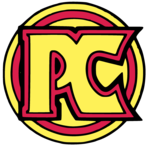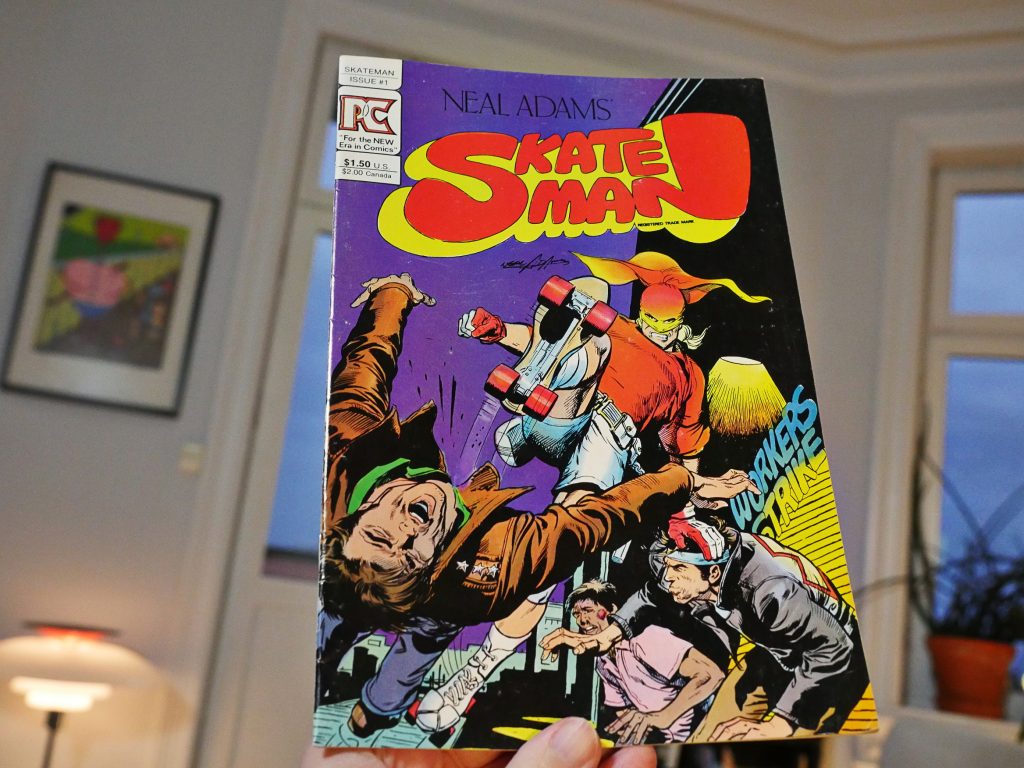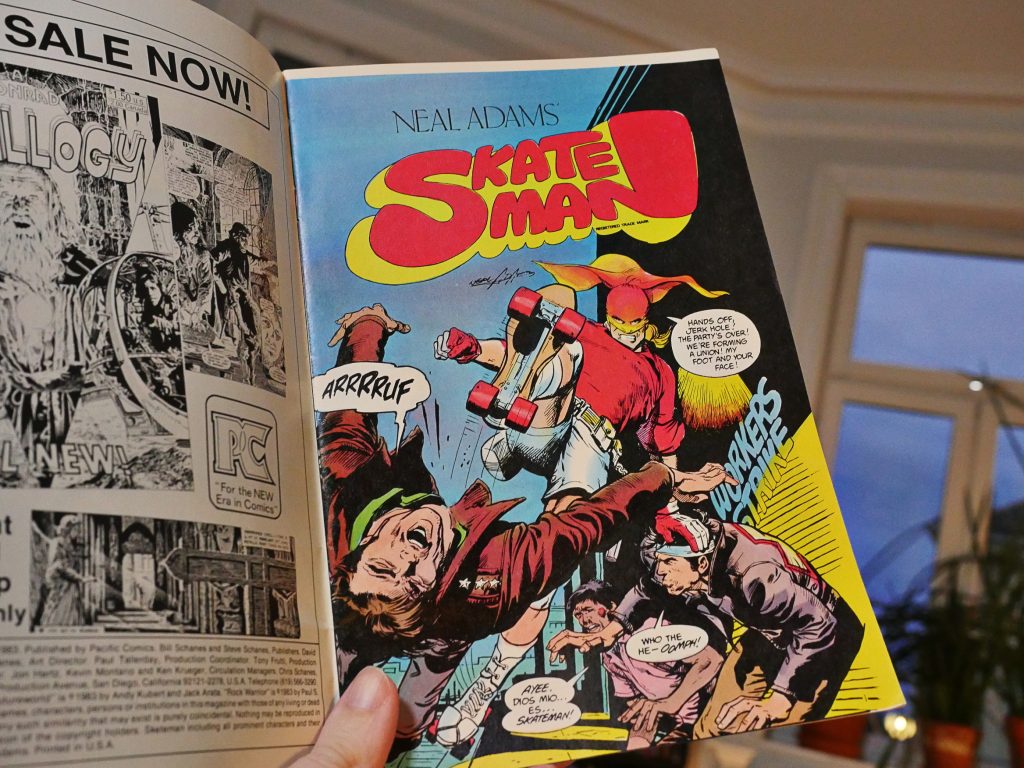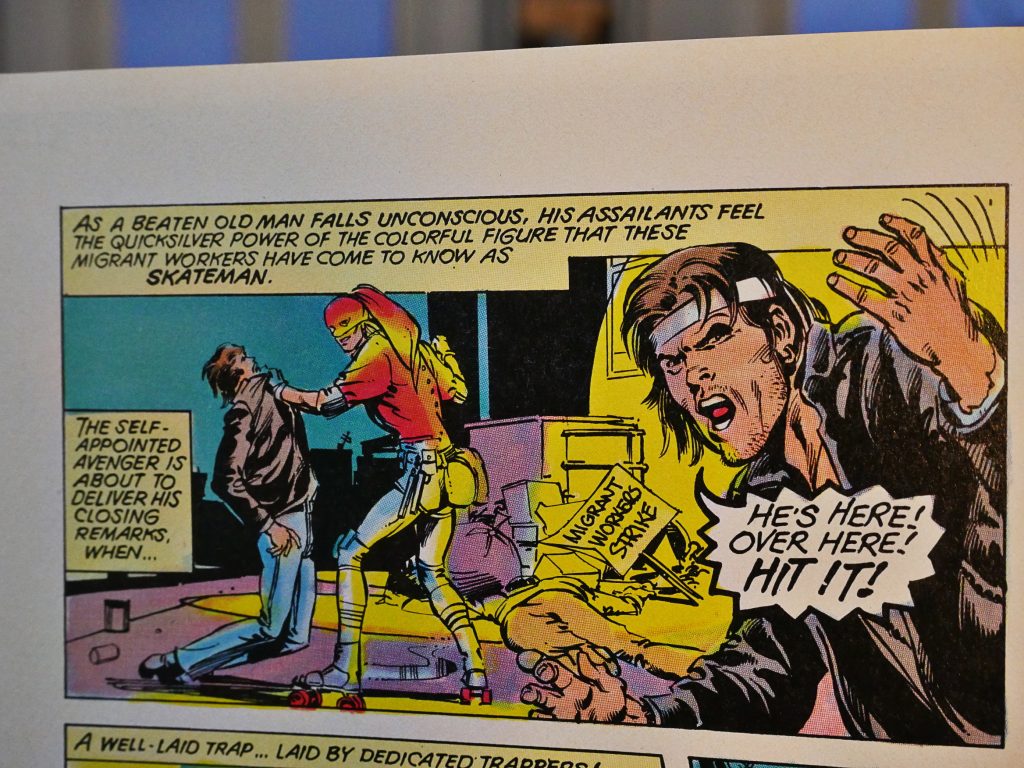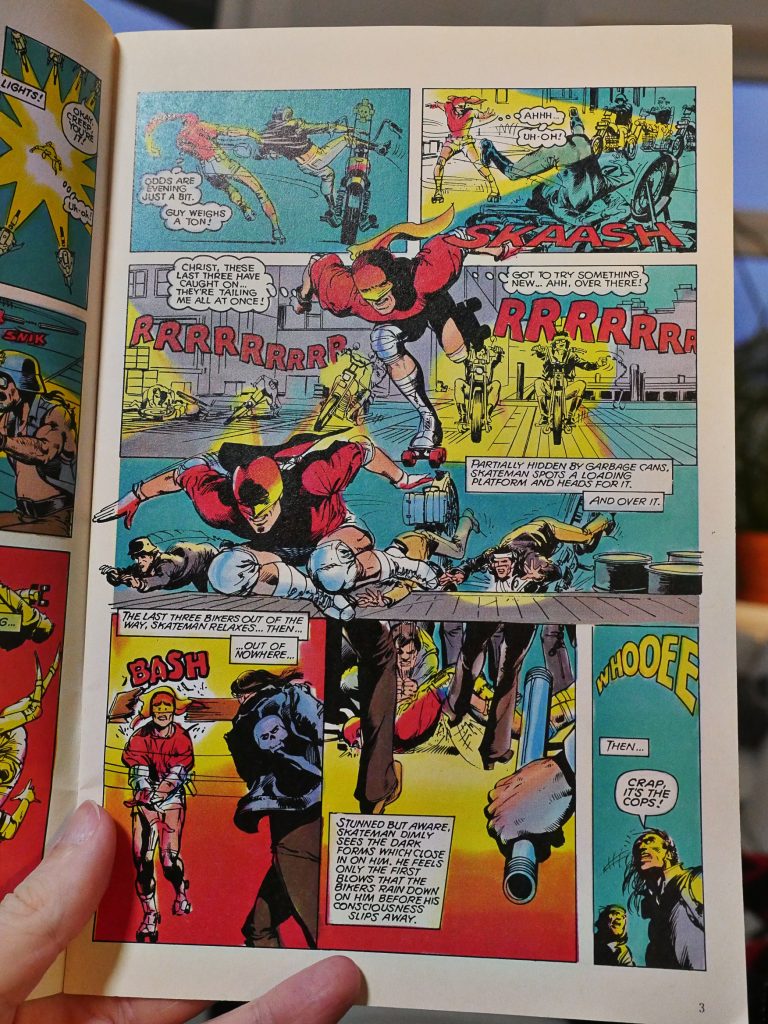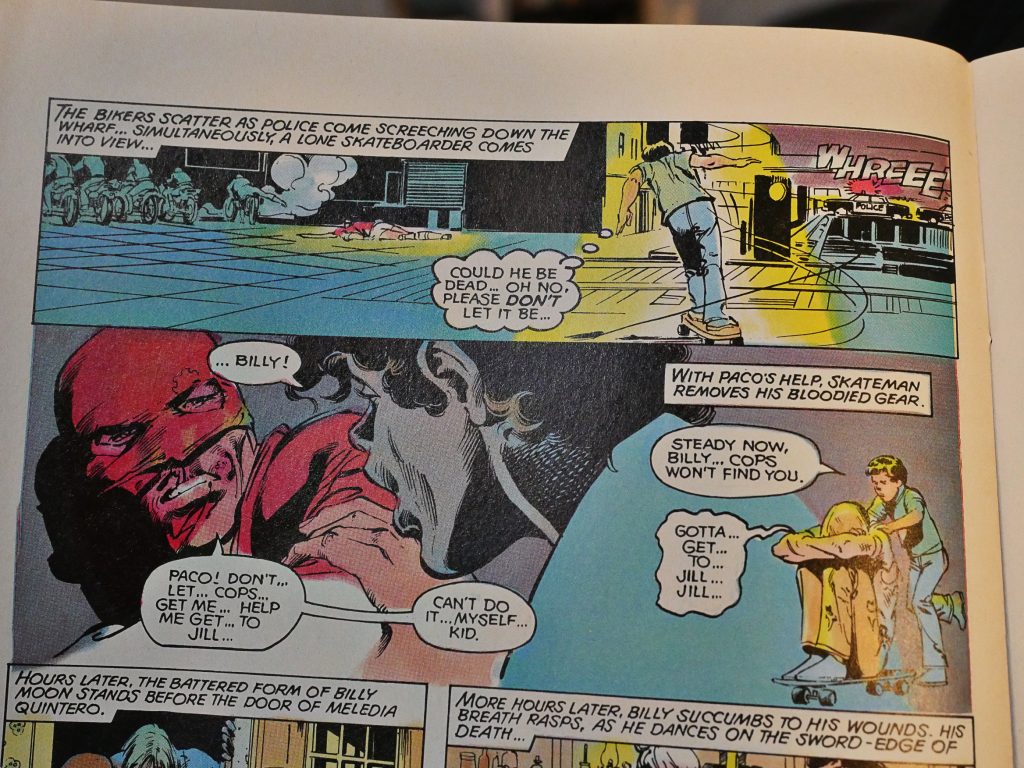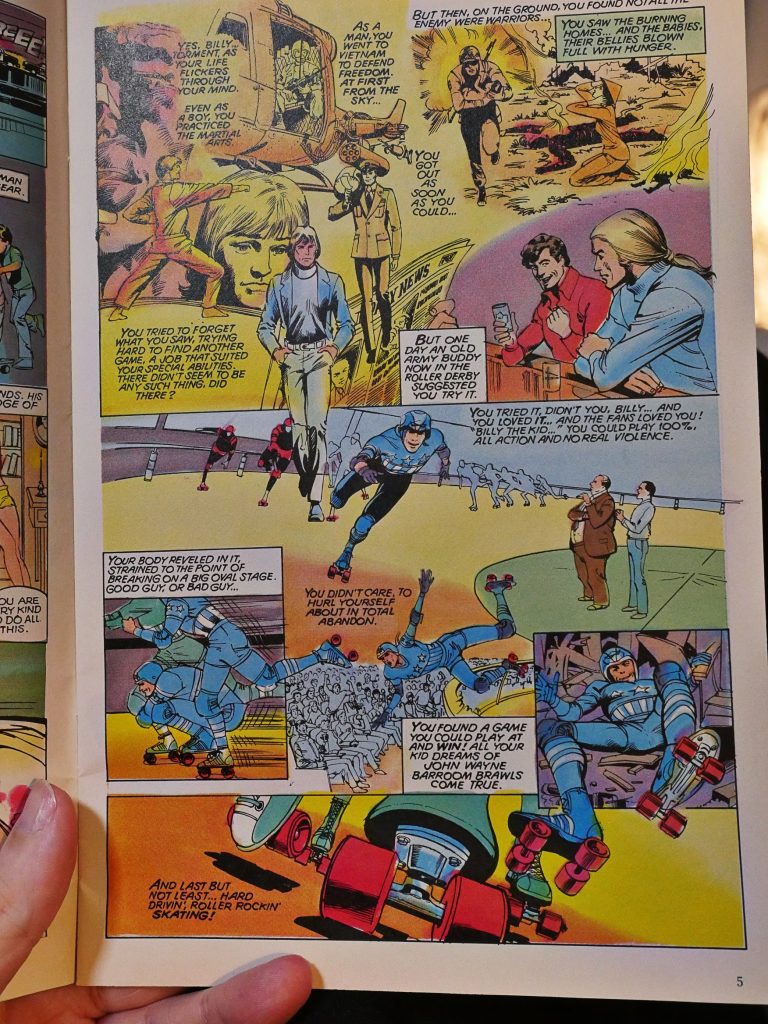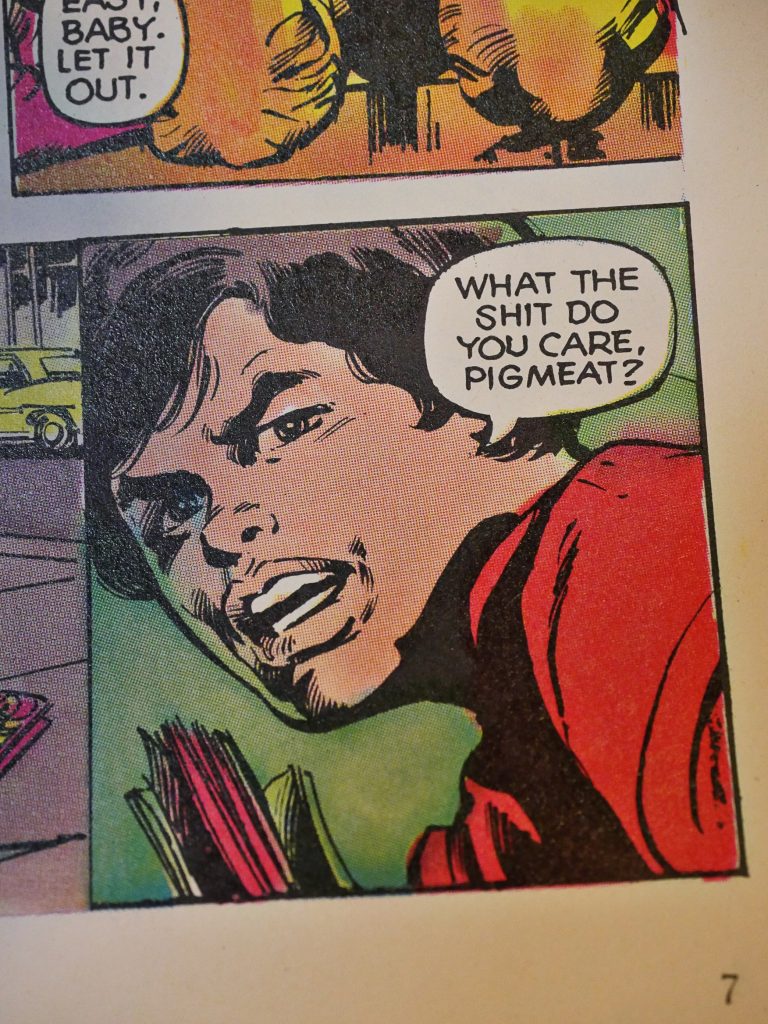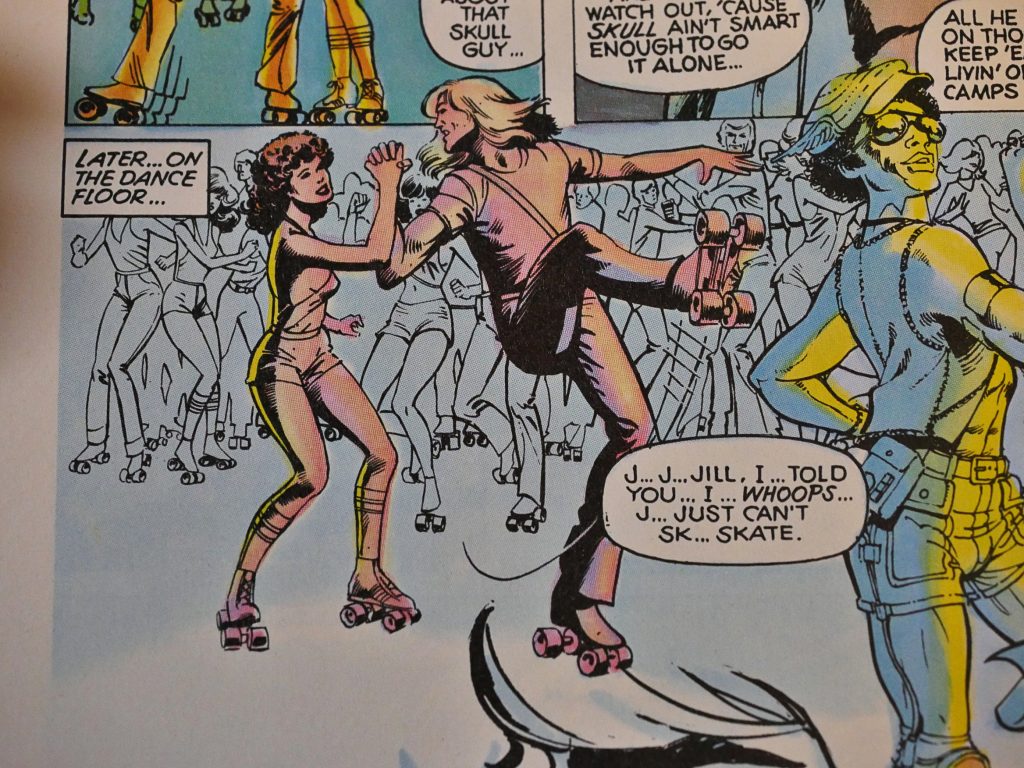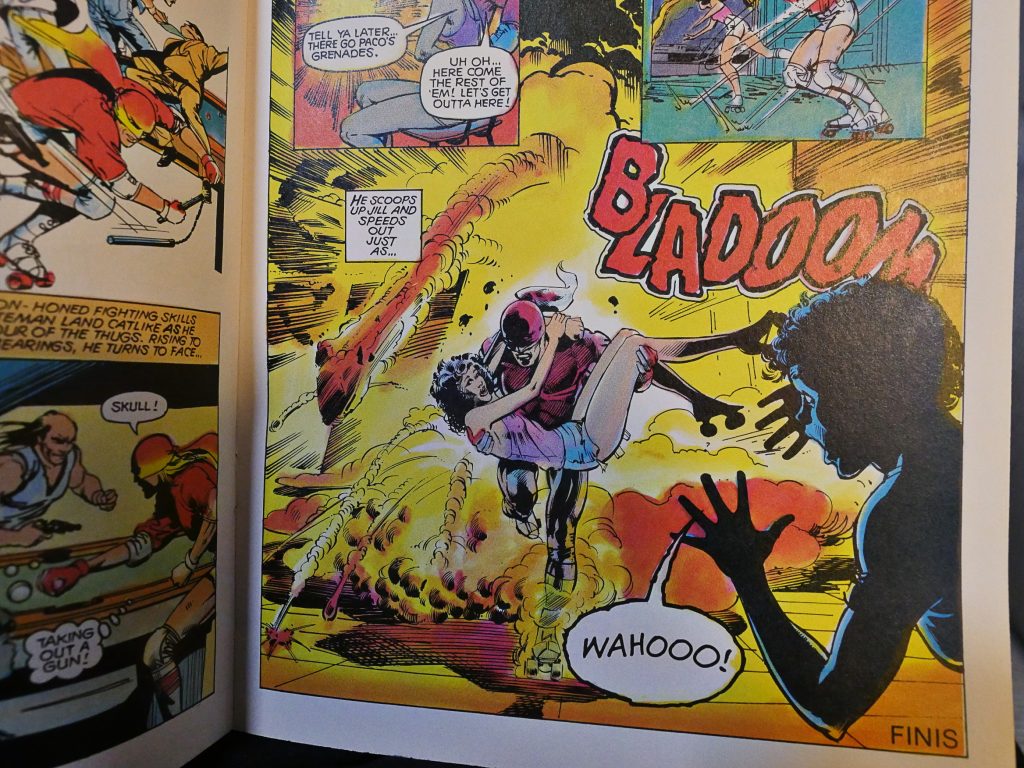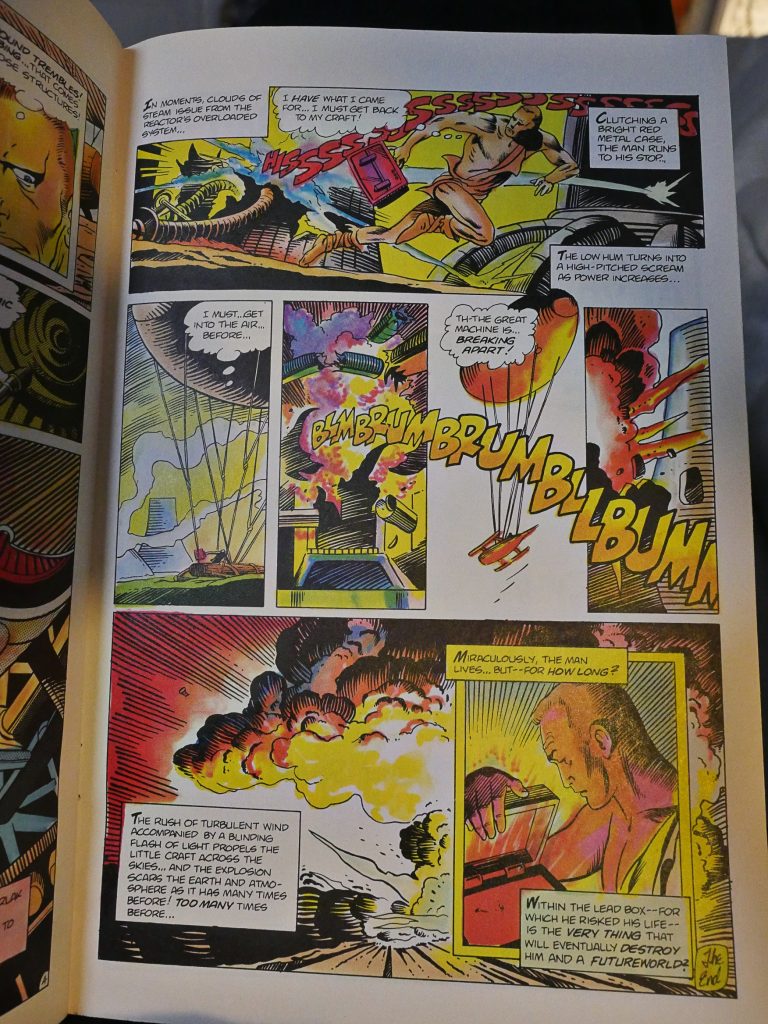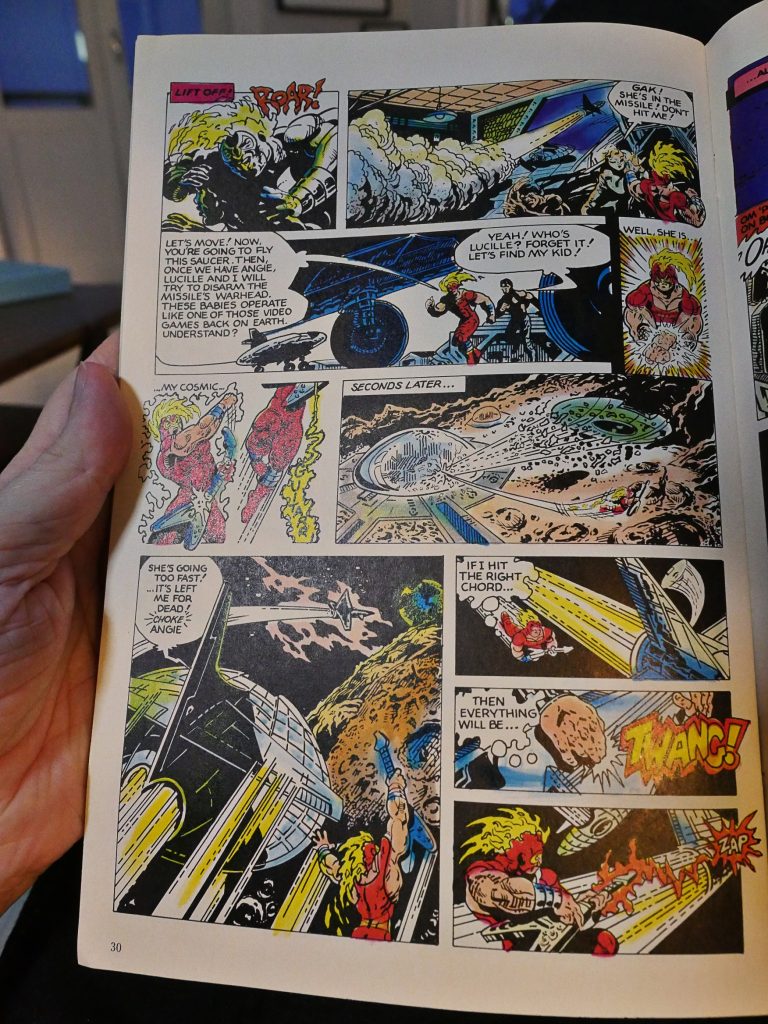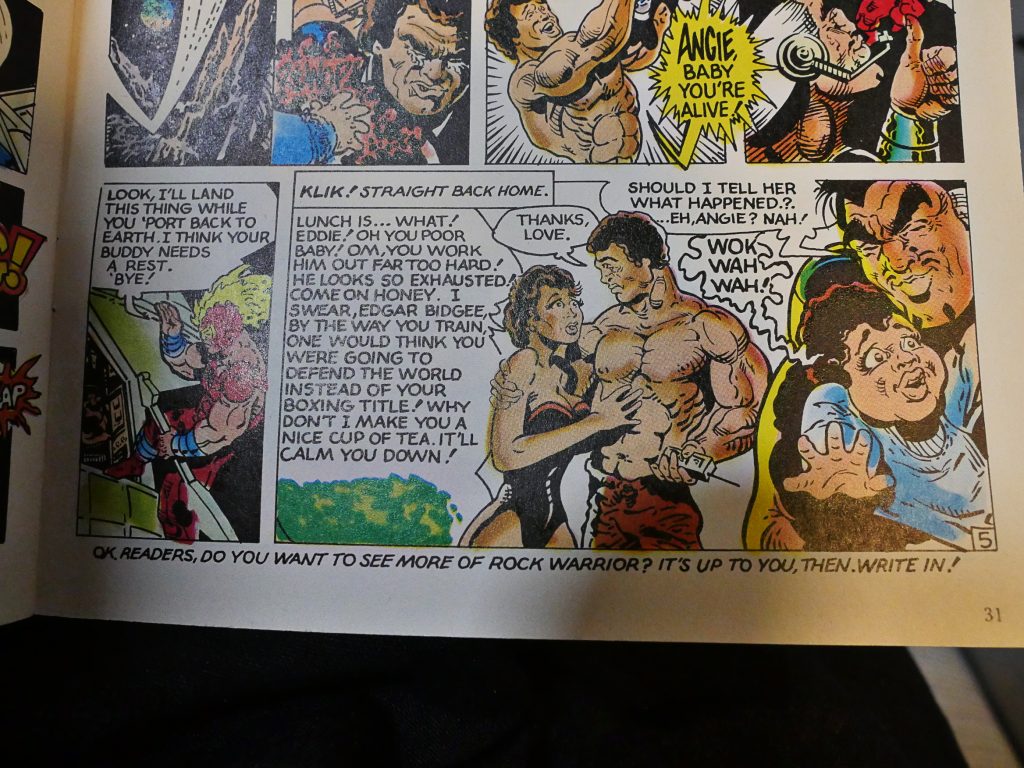Skateman (1983) #1
Pacific published Neal Adams’ slightly more well-known Ms. Mystic book, which was about environmentalism. Here Adams again gets in touch with the zeitgeist, and does a story about a super-hero guy on… roller skates.
In 1983, when the roller skating craze was dead as a… I can’t think of anything that’s as dead as roller skating was in 1983.
He didn’t want to draw a splash page so they just repeated the cover on page one? Weird. Or perhaps he didn’t want to do a cover.
The plot is slightly difficult to decode. It’s about migrant workers and bikers, and I originally thought these guys were the migrant workers, but they’re the bikers. I should have remembered what “migrant workers” is code word for, and that the hero wouldn’t be beating them up.
So this is pro-labour and also pro-migrant, I think?
Adams does his usual thing with the artwork, and it looks nice as always. But it does seem a bit rushed: He doesn’t bother to put in backgrounds most of the time, and while the layouts have some zip (notice how the oversized skating points the eye right to the climactic “BASH”) it seems a bit half-baked.
It’s not all roller skates. There’s also skateboards. And the skateboard ambulance.
I think I could have done without the origin story, which goes from Vietnam into the hell that is the roller derby.
Adams is all up on all the latest slang.
Since this is a super-hero book, the protagonist has to protect his secret identity by pretending not to be able to skate when they go out on skating dates, as all normal people do.
And… then it’s over? Finis?
Well, I guess as super-hero books go, this was one of them.
There’s two backup features: One by Andy Kubert and Jack Arata that’s a glimpse into a post-apocalyptic feature, but the story is so brief it’s hard to tell what they were trying to do, beyond having an ironic (and I mean that in a dramatic sense) ending.
Paul S. Power does the second backup strip, which make the first seem like a model of cohesion.
NOOO! DON”T WRITE IN! NO ROCK WARRIOR!
Skateman is primarily known for its artistic failings, despite being the product of the highly regarded and influential comics creator Neal Adams. Historian Don Markstein called its protagonist “one (of) the least-acclaimed heroes of all time”. The Slings & Arrows Comic Guide rhetorically asked, “What was Neal Adams thinking?”; and in January 1991, Kitchen Sink Press’s World’s Worst Comics Awards listed Skateman #1 as the worst comic of the previous 25 years. Similarly, Tom Orzechowski has stated that Skateman is “known in the industry as the World’s Worst Comic Book”.
I think that’s totally unfair. Skateman wouldn’t be on my Top 1000 Worst Comics I’ve Read, because there’s a lot of awful comics out there. I wonder whether these people just find the word “Skateman” funny and then pan the book on the concept alone? I mean, it’s a bad comic, but ragging on it this way just reeks of “we’re so hip that we know that roller skates aren’t cool”, which is just sad.
I wonder whether it’s all down to sexism and homophobia, as usual:
The San Diego Reader said that Skateman made Dazzler “seem like Proust by comparison”, and partially attributes the fall of Pacific Comics to “(s)everal palletloads of unsold Skateman comics”.
I think it’s telling that they compare it to Dazzler, which was a completely inoffensive super-hero book at the time… where the hero was a woman (and sang disco music). Roller skates have also been feminised, and it wasn’t until roller blades were invented that they were cool for guys, too.
And disco is gay coded, and Skateman wore short denim cutoffs, so you see where this is all going.
Comics criticism, man. But here’s some contemporaneous criticism.
R A Jones writes in Amazing Heroes #39, page 143
What can you say about a comic
that looks like a cross between
Batman and “Roller Boogie?” I
was prepared to thoroughly
loathe Skateman, but to my sur-
prise I rather enjoyed it.[…]
The script could have been
lifted from any• one of Charles
Bronson’s last six movies, and I
seriously doubt if today’s
readers can believe that any
sane adult would actually allow
a small’ boy to share in his
dangerous lifestyle. The . story
also ends far too abruptly, as if
the editors had said, “Finished
or not, Neal, we’ve got to get the
book out this month!”So what was there to enjoy?
That beautiful Adams’ art. I’m a
sucker for it. His style of exag-
gerated realism is perfect for
almost any genre. It carries
Skateman completely, so you
really don’f worry. overmuch
about thescript.
Aha! Neal Adams talks about how and why Skateman was made.
Steve Ringgenberg writes in Amazing Heroes #51, page 30
It to Adam’s credit that he has
enough perspective about himself
that he can wryly refer to the Ms.
Mystic as ‘annual,” and that he refers
to Skateman as:
‘a reprehensible comic book,”
offering this caveat:It wasn’t intended to be for
sale on this marketplace. It was
intended to be promotion for a
potential movie that a producer
named John Ballard wanted to do;
we tailor-made it for that, He did
the project when skating was com-
ing in.Nothing happened with
the movie for a long time, and so,
when we were asked (by Pacific) if
we had anything lying around,
Skateman was lying around. When
We were asked whether not we
could get permission to print the
thing, well, that’s when skating svas
not only out, but the door
had shut.‘So, I thought that we had done
a fairly good job on the book, and I
thought that it held together very
well, but it wasn’t really intended
to be the kind of book we would.
think of ourselves as producing.’
But, despite his own reservations
about Skateman, and the mountain
of critical abuse that was subse-
quontly heaped on both the comic
and Adams for producing it, Adams
quite cheerfully pointe ‘out:
did sell 70,000 copies of it; people
sort of like it, and are asking for a
second issue.‘Actually, when
you sit down with the book and
read it, it holds together. You can
take it into the bathroom and read
it..
Well, that explains the timing.
Jay Allen Sanford has this to say about how sell it sold::
Adams did manage to turn in a one-shot comic in 1983 called Skateman, a tale of a roller-skating superhero that made Marvel’s Dazzler seem like Proust by comparison. Several palletloads of unsold Skateman comics gathered dust, and no amount of salesmanship could unload them on accounts who were by now too savvy to believe that a “marquee name” on a comic cover guaranteed sales.
I.e., not very.

